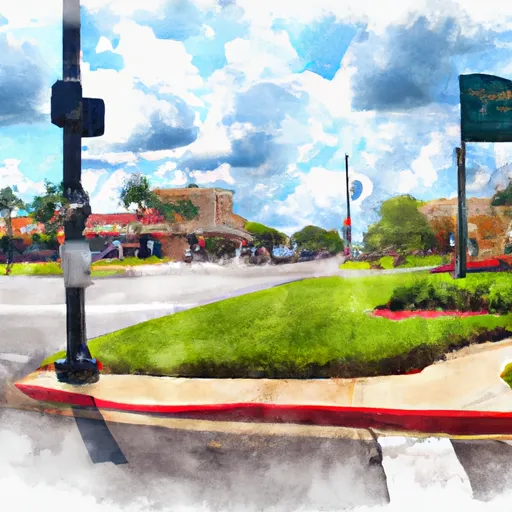-
 Snoflo Premium
Snoflo Premium
Get unlimited access to all our content
With no Ad interruptions! - Start Your Free Trial Login with existing account
Lutz
Eden Index
Climate
6.8
•
Recreation
4.2
•
Community
4.5
•
Safeguard
5.3/10

Lutz, Florida is a charming suburban town located in Hillsborough County, known for its pleasant climate, hydrology constituents, and numerous outdoor recreation opportunities. The town experiences a typical subtropical climate, with hot and humid summers, mild winters, and abundant sunshine throughout the year. Summers are characterized by high temperatures reaching the 90s°F (32-35°C), occasionally accompanied by afternoon thunderstorms. Winters are mild, with temperatures ranging from the 50s°F (10-15°C) to the 70s°F (20-25°C).
Lutz is blessed with an abundance of hydrology constituents. It is home to several lakes, ponds, and small streams, enhancing the natural beauty of the area. These water bodies provide opportunities for fishing, boating, kayaking, and other water sports. Additionally, Lutz is located near the Hillsborough River, which offers scenic landscapes for nature enthusiasts and avid kayakers.
Outdoor recreation opportunities in Lutz are plentiful. The town is surrounded by numerous parks and nature preserves, including Lake Park, Brooker Creek Preserve, and the Upper Tampa Bay Conservation Park. These areas offer hiking trails, picnic spots, and wildlife observation opportunities. Golf enthusiasts can enjoy the challenging fairways and lush greens offered by the nearby Cheval Golf and Country Club.
Overall, Lutz, Florida is a delightful place to live or visit, with its favorable climate, hydrology constituents, and abundant outdoor recreation opportunities.
What is the Eden Index?
The Snoflo Eden Index serves as a comprehensive rating system for regions, evaluating their desirability through a holistic assessment of climate health, outdoor recreation opportunities, and natural disaster risk, acknowledging the profound impact of these factors on livability and well-being.
Climate Health Indicator (CHI): 6.8
Lutz receives approximately
1336mm of rain per year,
with humidity levels near 86%
and air temperatures averaging around
23°C.
Lutz has a plant hardyness factor of
9, meaning
plants and agriculture in this region tend to thrive here all year round.
By considering the ideal temperature range, reliable water supplies, clean air, and stable seasonal rain or snowpacks, the Climate Health Indicator (CHI) underscores the significance of a healthy climate as the foundation for quality living.
A healthy climate is paramount for ensuring a high quality of life and livability in a region, fostering both physical well-being and environmental harmony. This can be characterized by ideal temperatures, reliable access to water supplies, clean air, and consistent seasonal rain or snowpacks.
Weather Forecast
Streamflow Conditions
Tampa Bay
Area Rivers
Tampa Bay
Snowpack Depths
Tampa Bay
Reservoir Storage Capacity
Tampa Bay
Groundwater Levels
Recreational Opportunity Index (ROI): 4.2
The Recreational Opportunity Index (ROI) recognizes the value of outdoor recreational options, such as parks, hiking trails, camping sites, and fishing spots, while acknowledging that climate plays a pivotal role in ensuring the comfort and consistency of these experiences.
Access to outdoor recreational opportunities, encompassing activities such as parks, hiking, camping, and fishing, is crucial for overall well-being, and the climate plays a pivotal role in enabling and enhancing these experiences, ensuring that individuals can engage in nature-based activities comfortably and consistently.
Camping Areas
| Campground | Campsites | Reservations | Toilets | Showers | Elevation |
|---|---|---|---|---|---|
| Paynes Prairie State Park | None | 92 ft | |||
| Lake Manatee State Park | None | 68 ft | |||
| Little Manatee River State Park | None | 21 ft | |||
| Holder Mine - Withlacoochee State Forest | 13 | 34 ft | |||
| E G Simmons County Park | None | 7 ft | |||
| Raccoon Creek Military - MacDill AFB | None | 5 ft | |||
| Myakka River State Park | None | 16 ft | |||
| Ross Prairie | None | 54 ft | |||
| Coons Creek Military - MacDill AFB | None | 5 ft | |||
| Rainbow Springs State Park | None | 39 ft |
Catastrophe Safeguard Index (CSI):
The Catastrophe Safeguard Index (CSI) recognizes that natural disaster risk, encompassing floods, fires, hurricanes, and tornadoes, can drastically affect safety and the overall appeal of an area.
The level of natural disaster risk in a region significantly affects safety and the overall livability, with climate change amplifying these risks by potentially increasing the frequency and intensity of events like floods, fires, hurricanes, and tornadoes, thereby posing substantial challenges to community resilience and well-being.
Community Resilience Indicator (CRI): 4.5
The Community Resilience Indicator (CRI) recognizes that education, healthcare, and socioeconomics are crucial to the well-being of a region. The CRI acknowledges the profound impact of these elements on residents' overall quality of life. By evaluating educational resources, healthcare accessibility, and economic inclusivity, the index captures the essential aspects that contribute to a thriving community, fostering resident satisfaction, equity, and social cohesion.

